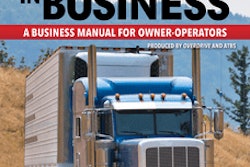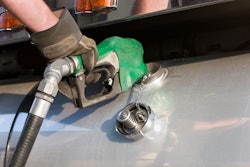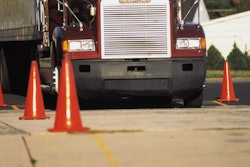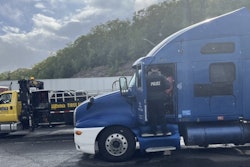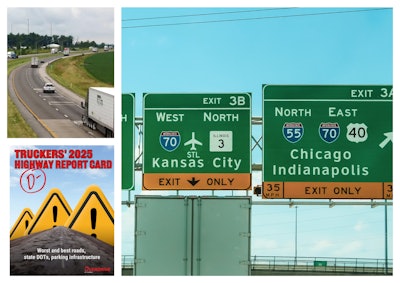
The United States’ vast National Highway System stretches far and wide, and you can be certain a commercial truck driver travels most every mile of it every single day. The highway, after all, is a trucker's office.
Who better to turn to for identification of the states and specific routes in need of most attention to improve “office” conditions?
Overdrive this year surveyed readers, asking owner-operators and other truck drivers to name the worst and best states and routes for highway upkeep, likewise parking infrastructure in states and particular metro areas. The answer for the state with the worst highways was abundantly clear. Nearly a third of truckers agreed that the Hoosier State leaves plenty to be desired when it comes to highway conditions.
Among the 32% of Overdrive readers who chose Indiana as worst state, a whopping 83% pointed to I-70 as the biggest reason why.
“I-70 is just awful east of Indianapolis,” said Missouri-based owner-operator David Foster. “Even through Indianapolis, there’s bridge embankments." One reader put that another way in commentary delivered via the survey about I-70 bridges being "outfitted with a ski ramp on all approaches."
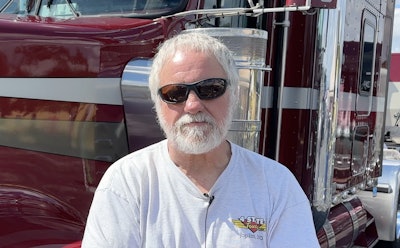 Owner-operator David Foster hauls general freight leased to Standard Transportation Services. His 2005 Kenworth W900L, which he bought new, has operated in all of the Lower 48 states.
Owner-operator David Foster hauls general freight leased to Standard Transportation Services. His 2005 Kenworth W900L, which he bought new, has operated in all of the Lower 48 states.
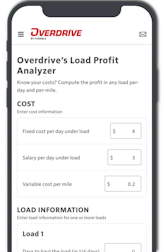
Indiana isn't the only state called out by respondents in a new, 20-page report charting Overdrive's Highway Report Card survey results for worst and best states, roads and parking infrastructure. Readers can dig into more of the results via this link or download the report via the form at the bottom of this story.
[Related: Truckers' 2025 Highway Report Card: Worst roads, states, routes, parking]
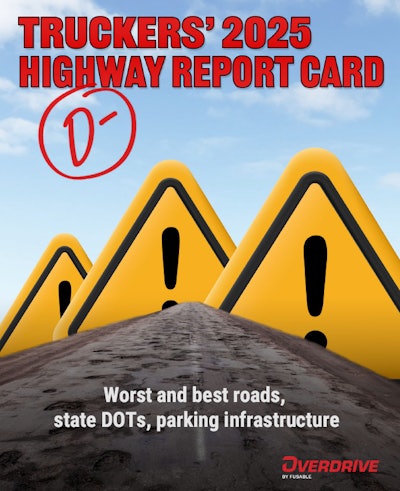
Respondents to Overdrive’s survey nearly unanimously (97%) said it’s the terrible pavement condition that most characterized their choice of Indiana overall, with 61% also noting a clear lack of maintenance of the infrastructure.
“I’m amazed that a state can let a road get this bad,” one commenter wrote of I-70 there. “I understand that it is a very heavy truck route, but this road is ridiculous.”
While the survey did ask readers to pick one state and one highway within that state, some weren't content with a single choice.
“Honestly, every state has a horrible quality of roads,” one commenter wrote, adding that “even new repairs are horrible. It’s like being a bronco buster at a rodeo.”
West Virginia-based livestock hauler Joey Carola, while he also feels Indiana features the worst of the worst today, said “they’re all rough,” no matter which state you’re in. He gave credit where it’s due, though, for plenty of white-and-orange-striped construction barrels -- “you can tell riding up and down the road, they’re working on them.”
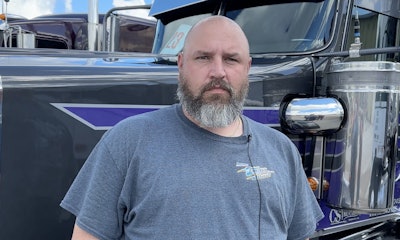 Joey Carola hauls livestock for Iowa-based CS Trucking LLC.
Joey Carola hauls livestock for Iowa-based CS Trucking LLC.
While drivers were tough on Indiana in particular, the state’s Department of Transportation touted its record of having “top-rated roads and bridges,” according to Natalie Garrett, InDOT’s Strategic Communications Director. "Recent data from the Federal Highway Administration shows 94% of Indiana roadways in fair or better condition, and 97% of Indiana bridges being well-maintained,” she said. Yet Garrett acknowledged the “concerns on state-maintained roadways, like I-70,” adding that InDOT “is working to address those through current and future construction projects, as well as regular maintenance operations.”
Owner-operator Stephen Halsted, who recently moved on from OTR trucking and his expedited-hauling niche, pointed to the same section east of Indianapolis that Foster singled out -- all the way to the Ohio border, a frequent route of his during his career, including the most recent parts of it. “Seems as soon as they get done with it, it’s just as [bad], if not worse, than it was before they started working on it,” Halsted said.
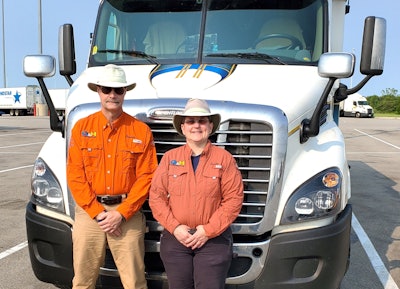 Stephen Halsted and his business partner, Sandra Goche, recently retired from the road. Running expedited freight out of their southwest Ohio home base, Halsted and Goche hauled all over the U.S. and got an up-front look at road conditions around the country.
Stephen Halsted and his business partner, Sandra Goche, recently retired from the road. Running expedited freight out of their southwest Ohio home base, Halsted and Goche hauled all over the U.S. and got an up-front look at road conditions around the country.
Truckers along that route might take heart from Natalie Garrett at InDOT, but get ready for more of those barrels. The department has “several projects scheduled for construction on I-70 over the next several years to address aging pavement, bridges, and safety,” she said, adding that the route has been on the department’s radar as a priority for the last several years.
The highway-maintenance juggling act in two 'worst states': Indiana, Arizona
There’s been no shortage of construction along I-70, yet like Halsted, many other owner-operators report frustration with lack of improvement long-term.
Accommodating current traffic levels and "keeping the construction zones safe" while also fundamentally improving the road ... it's all a huge juggling act, a difficult proposition, according to Garrett, who cited those and other factors hindering improvement:
- Midwest weather with severe freeze-thaw cycles
- High volumes of freight traffic (13% of Overdrive survey respondents cited horrendous congestion along Indiana routes)
- Increased load weights of permitted and non-permitted trucks
The department limits its construction zones to no more than five to six miles in length in efforts to maintain capacity for traffic.
“Factors such as heavy freight traffic and severe freeze-thaw cycles, among others, contribute to road conditions and upkeep” there, Garrett noted. “Significant freight traffic as seen on I-70 … expedites wear and tear on roadways. Extreme temperature swings, which we typically see in Indiana, can also affect not only the pavement surface (potholes), but also the subgrade.”
"It was fixed and overladen with asphalt, the repairs dropped a couple inches, and now it’s rougher than a corn cob.”
--Overdrive survey respondent about the impermanence of I-70 repairs
What Garrett dubbed "future funding" complexities and unknowns is another challenge to improvement. I-70 isn’t the only highway InDOT has to worry about, of course. The department maintains more than 29,000 lane-miles of highway and more than 5,700 bridges across the state, she noted. Even with that, there are three active projects along I-70 that will be finishing this year, and three that will start construction this fall or in the spring of 2026, “which will result in much-improved conditions.”
[Related: New Indiana law clears path for InDOT to request tolling waiver]
To help the state better keep track of its assets -- pavement, bridge components, drainage structures, road signs and more -- InDOT in recent years has worked to develop a 20-year asset management plan “to improve road and bridge conditions and ensure there is a plan for every asset in InDOT’s system,” Garrett said. “This plan helps inform both capital construction and maintenance projects.” The state’s current project map can be viewed here and sorted in a variety of ways.
[Related: Truckers call out the 'worst road in America']
Coming in at No. 3 among worst states for highway upkeep named by survey respondents was Arizona, with the majority of respondents (56%) who picked the state highlighting I-40 as the worst route. I-40 across New Mexico (also a top 5 worst state) and Arizona, directly connected and considered together, ranked No. 2 for worst route in the nation, furthermore, after both states' considerable problems maintaining I-40 were called out in anecdotes by readers two years ago.
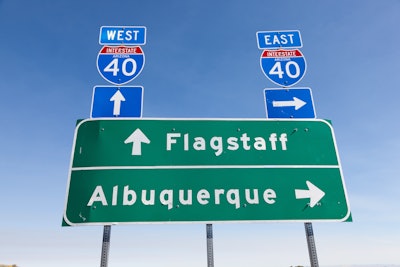 I-40 in both Arizona and New Mexico ranked high on the list of the worst highways in the U.S.
I-40 in both Arizona and New Mexico ranked high on the list of the worst highways in the U.S.
In Arizona, the worst segment of that highway, respondents noted, is between the California state line and Flagstaff. Greg Byres, the Arizona Department of Transportation’s state engineer, said that particular stretch presents unique problems for the state due to the elevation gain as it gets closer to Flagstaff.
“It starts off at about 5,000 feet and goes up to about 7,200 feet,” he said. “And during the winter, that’s the most western front face of the mountains as you’re approaching Flagstaff, and it gets lots of snow. So, consequently, when we have snow events during the winter, we hear a lot from the truckers” about the quality of the road.
Add to that “a lot of runoff from” the snow when it melts, he said, along with “massive amounts of freeze-thaw along that slope and in the lower lying areas just west of there. It’s all clay. It’s nasty stuff to build a highway on, and … we get a lot of movement in our pavement in that area.”
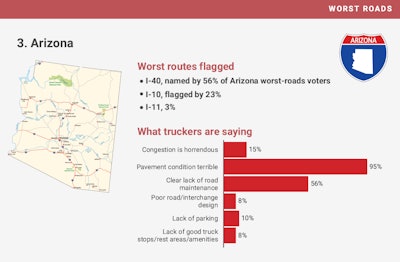 The reasons truckers chose Arizona as worst state, from the "Truckers' 2025 Highway Report Card." Download the full report via this link or the form below.
The reasons truckers chose Arizona as worst state, from the "Truckers' 2025 Highway Report Card." Download the full report via this link or the form below.
ADOT’s well aware of the issues along the route, and Byres noted that it’s “a high maintenance area. ... It does get rough; a lot of potholes. So it’s a big deal for us to try and maintain that during the wintertime. Spring rolls around, and that’s when we have more issues than not, then we spend the summer trying to fix it.”
To fix what breaks during winter and spring, construction follows, which means lane closures, plenty more of those barrels, and congestion.
“It’s fully understandable what [truckers] are talking about, but it’s the nature of the beast through that section,” Byres added.
Behind the scenes in Arizona, though, efforts abound to make the roads -- and I-40 in particular -- less susceptible to impact from freeze-thaw cycles. Byres pointed to a recent project that took about two years to reconstruct a 10-mile section of I-40, about 20 miles west of Ash Fork. The project included reducing the highway to one lane in each direction, over-excavating the area by removing more soil than normal beneath the highway and building it back up with controlled fill on which to pave the highway.
“That was the absolute worst section that we had, and that’s why we picked it,” Byres noted. “That 10 miles is performing great.” It alone cost $60 million to rebuild, putting Garrett's "future funding" challenge in some perspective.
“If we had a whole bunch more money we could do that with that entire section," Byres said, "but at this point it’s kind of piecemealing some of that to get it done.”
On Byres' funding wish list: “If we had a golden goose, we’d be in a whole different story, but nobody has that, so we do what we can with the funding we have,” he said.
In California, which ranked as the No. 4 worst state for roads in the Highway Report Card, the California Department of Transportation (Caltrans) said it spends roughly $2 billion a year to maintain its 50,000-plus interstate and U.S. highway lane-miles in the state. Truckers pointed to I-5 in the Golden State as the worst highway, and Caltrans said there are currently 13 pavement rehabilitation projects underway between Redding and San Diego with another 30 proposed to begin construction over the next five years.
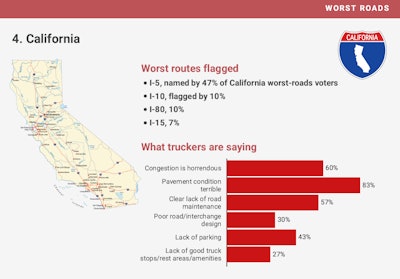 Download the full "Truckers' 2025 Highway Report Card" via this link or the form below.
Download the full "Truckers' 2025 Highway Report Card" via this link or the form below.
For Arizona, I-40 work isn’t done. Byres said ADOT’s five-year program schedules 27 projects on I-40 over the next three years, which includes bridges, pavement rehabilitation and pavement reconstruction projects.
Beyond funding challenges, workforce maintenance is also paramount there. Byres estimated ADOT is always short between 30 and 60 people across the agency. To make the most of its resources, ADOT uses a data-driven approach to prioritize sections of highway needing the most attention, to “help us drive where we can do the work, where it’s most effective," he said. "And so, we’re trying to be as efficient as we can with the dollars we have.”
[Related: Ohio truck parking expansion plan will add 1,400 spaces]
Truckers lauded the best of the best, too -- good examples among states
 As is often repeated, over-the-road truckers are “always headed home,” and there’s perhaps nothing more satisfying about OTR experience than a good road. Some states are clearly capitalizing, as pride of place was on offer in the survey results -- the most common place of residence for those who chose the top three states of Florida, Texas and Ohio was the state itself, likewise for Alabama and Georgia among top ten states.
As is often repeated, over-the-road truckers are “always headed home,” and there’s perhaps nothing more satisfying about OTR experience than a good road. Some states are clearly capitalizing, as pride of place was on offer in the survey results -- the most common place of residence for those who chose the top three states of Florida, Texas and Ohio was the state itself, likewise for Alabama and Georgia among top ten states.
It’s not all doom and gloom when it comes to highway conditions, as the above graphic from the 2025 Highway Report Card makes clear. The top states for highway quality chosen by the most Overdrive readers were Florida, Texas and Ohio. Florida and Texas DOTs don't see the dramatic freeze-thaw cycles ID'd by InDOT and ADOT, of course. Ohio might well provide a decent example, though, for its neighbor to the immediate west, truckers suggest.
“I’ve noticed that over the years, some roads, like in Florida and places, you don’t see them working on them and they’ll be smooth as glass forever,” said owner-operator David Foster. “And other roads, they’re working on them all the time, and they’re just rough as can be.”
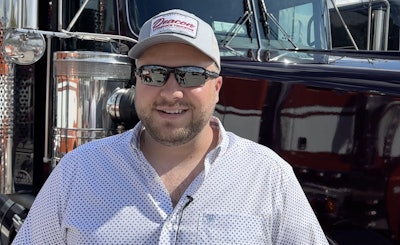 Unlike many Overdrive readers, livestock hauler Jake Arment highlighted Arizona and California as states he likes to drive through due to road quality, particularly I-8. Arment hauls nationwide for Iowa-based Veenstra Trucking.
Unlike many Overdrive readers, livestock hauler Jake Arment highlighted Arizona and California as states he likes to drive through due to road quality, particularly I-8. Arment hauls nationwide for Iowa-based Veenstra Trucking.
“It’s pretty smooth, and you just set the cruise and ride,” Arment said. “You’re out in the desert. I love being out West. I love the Southwest, particularly. If I could just run Texas, California and back all year, I’d do it in a heartbeat.”
Recently-retired owner-operator Halsted was one of just 1% of Overdrive readers who gave the “best roads” designation to Iowa. “Iowa seems to get ahead of the … curve and not letting it getting to be deteriorated before they actually get out there and do something about it,” he said. “They’re proactive, and I think Indiana is reactive.”
The pressure on state DOTs from the trucking community can help, officials noted. Keep up the flow of information not only to aid such reactive maintenance efforts, but more proactive ones as well.
Byres used the example of a spot that starts off as a small pothole, but a rainstorm coupled with “a couple thousand trucks running over that, you’ve suddenly got a big issue. And that can happen in just a matter of a couple of hours.”
Word incoming from highway users in a timely fashion might prevent such an outcome. “We don’t ever want our roadways to get to a point where they become a safety issue, so the more we hear from truckers and the traveling public," he said, "the better off we are, because then we can respond immediately to those areas.”
While Byres noted that ADOT personnel are constantly traveling the state’s highways, “we don’t get to every single inch of our roads, so if somebody sees something like that, a quick phone call is extremely helpful to us.”
Indiana DOT’s Garrett echoed that sentiment, encouraging truck drivers and other motorists to report specific issues and concerns to InDOT’s customer service.
“While InDOT personnel drive routes regularly and note immediate issues, we can’t be everywhere at once,” she said. “Information provided through InDOT customer service is documented and routed to the proper department to be addressed within an assigned timeframe.”
Download your "Truckers' 2025 Highway Report Card" via the form below.


